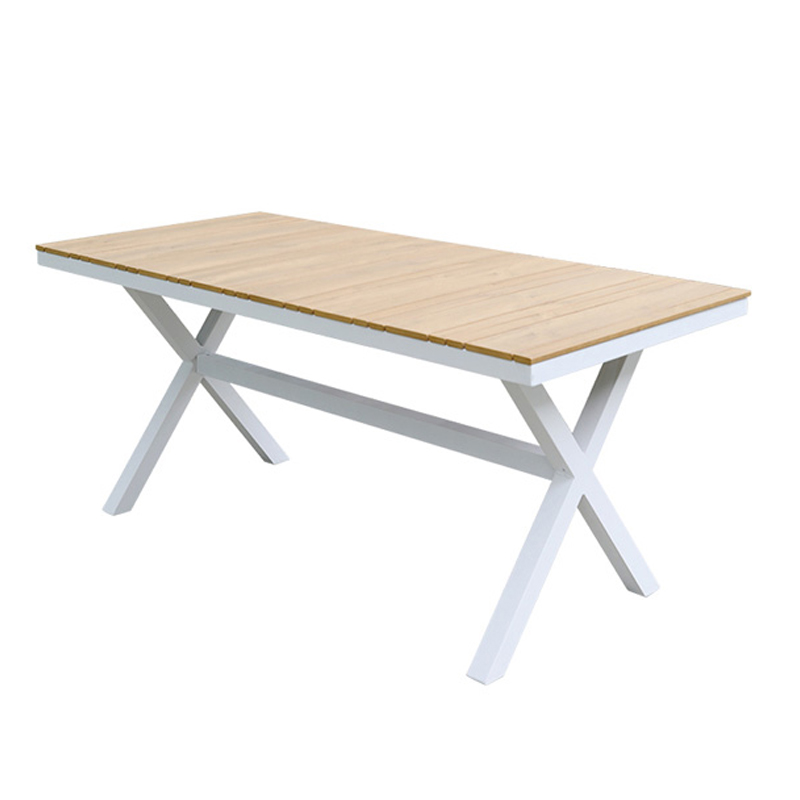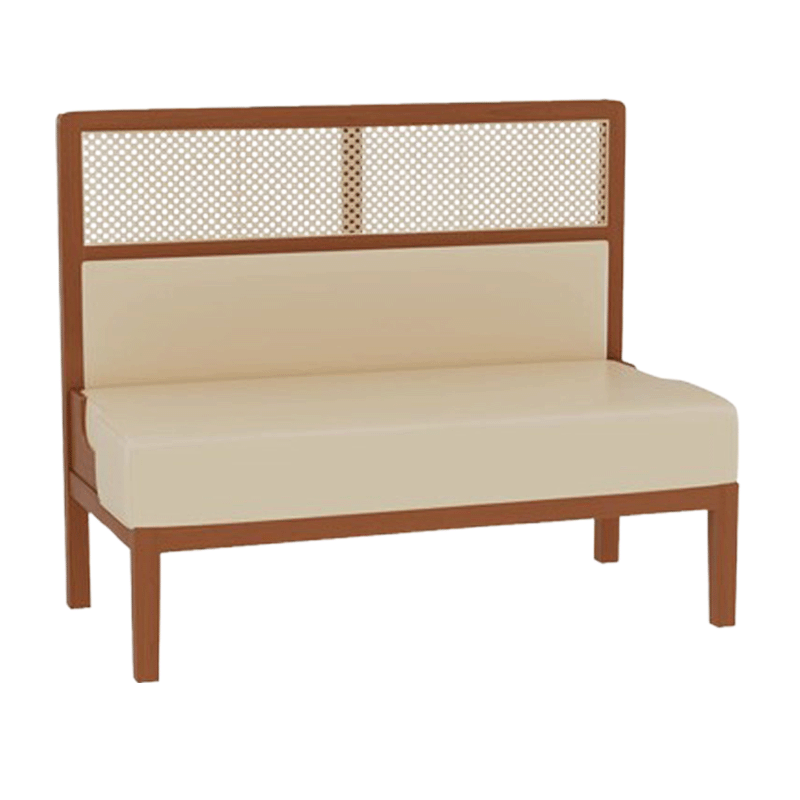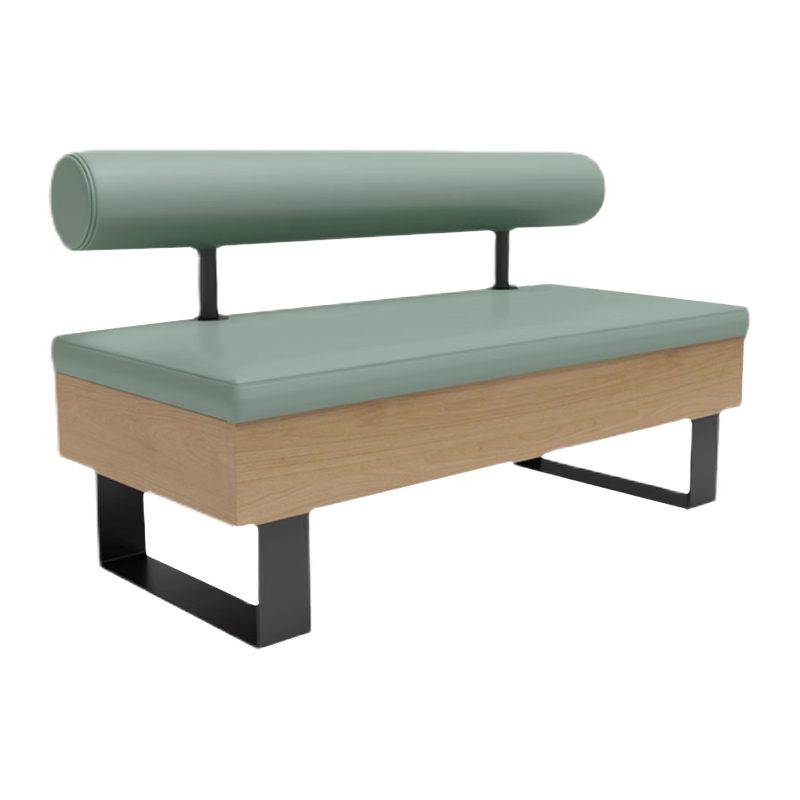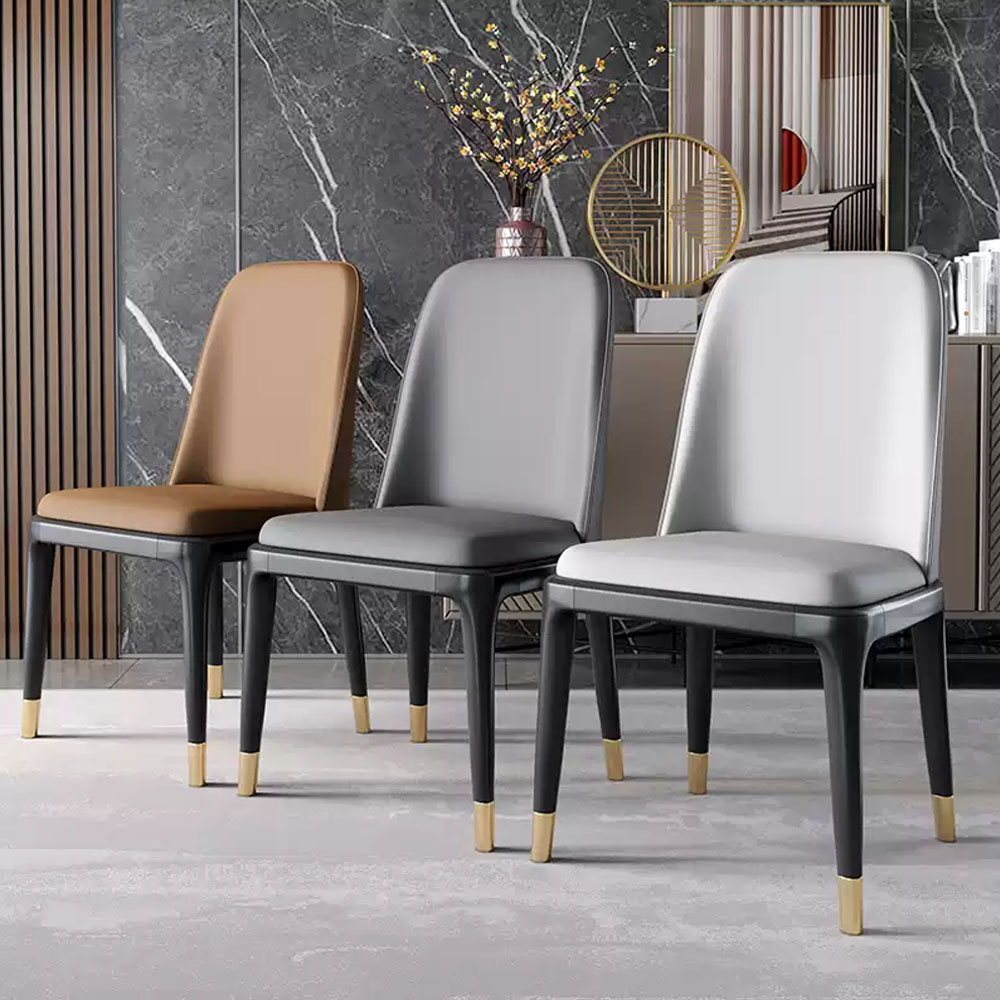Custom Restaurant Furniture isn’t just about matching chairs and tables — it’s about creating an atmosphere that tells your restaurant’s story. As a restaurant owner, you understand that every detail matters: the lighting, the layout, and especially the surface where your guests eat, talk, and connect. The texture, tone, and durability of your tabletops define the first impression of your dining space and influence how guests experience your brand.
When choosing materials for your custom restaurant furniture, you’re not simply picking what looks nice — you’re making a business decision that affects comfort, maintenance, and longevity. A warm oak top conveys authenticity; a polished sintered stone surface shows elegance and refinement. At Mingmeng Furniture, we’ve guided countless restaurant owners through this process, helping them select tabletop materials that are not only beautiful but built for years of service.
1. Solid Wood: The Soul of Authentic Dining
If you want warmth, nothing compares to a wood restaurant table. When a guest runs their hand across a solid oak or walnut top, they feel authenticity — the kind that can’t be replicated with laminate prints.
Many of our clients — from small bistros to Michelin-level restaurants — choose solid wood for its character and longevity. It ages gracefully, developing a soft patina that tells the story of every meal shared.
Why owners love it:
- Creates an inviting, home-like atmosphere.
- Can be refinished instead of replaced.
- Each piece is unique — just like your restaurant.
Reality check: It does need care. Wood reacts to humidity, so we recommend sealing it every 6–12 months, especially if your restaurant has open-air seating.
“I used to think solid wood was high-maintenance,” says a client from Sydney. “But after five years, our oak tables still look better than the day we opened. Guests always compliment how natural they feel.”
2. Laminate: Practicality for Busy Restaurants
If your restaurant serves hundreds of customers daily, a laminate restaurant table can be your best ally. Laminate combines visual appeal with practicality — the look of marble or wood, without the maintenance.
It’s the top choice for cafés, casual dining spaces, and franchises that value durability and uniformity. Laminate tabletops in custom restaurant furniture are budget-friendly, wipe-clean, and color-consistent — perfect when uptime matters more than luxury.
Why it’s smart:
- Easy to sanitize — one wipe and it’s spotless.
- Scratch-resistant and stain-proof.
- Countless finishes: matte, gloss, textured, or marble-look.
Pro tip: Don’t cut costs on the edges — a sealed edge prevents moisture damage and prolongs life. Mingmeng offers post-formed edges for a seamless, water-tight finish.
“For our chain cafés, laminate saved us weeks in maintenance time,” notes a restaurant manager in Chicago. “It’s practical, and with the right pattern, guests can’t tell it’s not wood.”

3. Sintered Stone & Quartz: Built for Luxury and Endurance
For fine-dining spaces that want a modern, premium aesthetic, the sintered stone restaurant table is unmatched.
This engineered surface combines elegance with performance — non-porous, heat-resistant, and stain-proof.
We’ve seen many upscale restaurant owners choose sintered stone after realizing how effortless cleaning becomes. Red wine, coffee, and oil stains simply wipe off — no stress, no polishing required.
Why it’s worth it:
- No sealing or maintenance required.
- Holds up under heavy daily use.
- Reflects light beautifully for a high-end look.
Caution: It’s heavier than laminate or wood, so pair it with a reinforced aluminum base.
From our project in Singapore: “We chose sintered stone for its clean, modern feel. Even after a year of service, the surface still shines like new.”
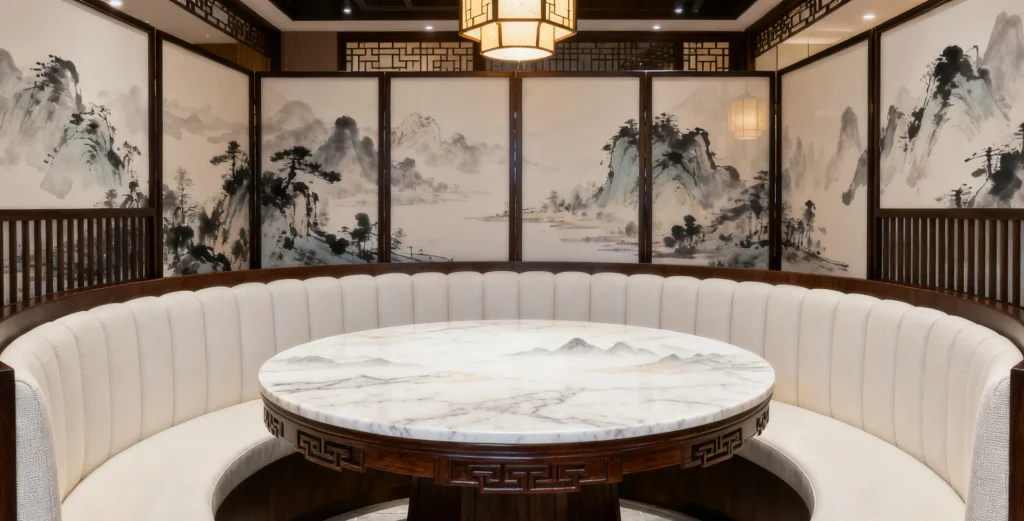
4. Metal, Glass & Mixed Materials: For the Bold and Modern
For restaurants that thrive on bold concepts and industrial chic, the metal restaurant table makes a statement.
A brushed brass frame with a walnut top exudes craftsmanship, while a smoked glass top introduces elegance and depth.
These combinations don’t just serve — they inspire. They’re ideal for bars, cocktail lounges, or open kitchens aiming for a distinctive identity.
Why owners choose them:
- Customizable frame shapes and edge profiles.
- Perfect for strong brand visuals or modern interiors.
- Reflective materials enhance lighting and ambience.
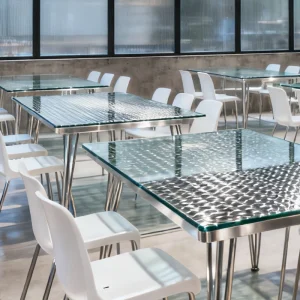
Design example: A wine bar in Melbourne paired black steel frames with dark walnut tops — now their tables feature in every customer photo on social media.
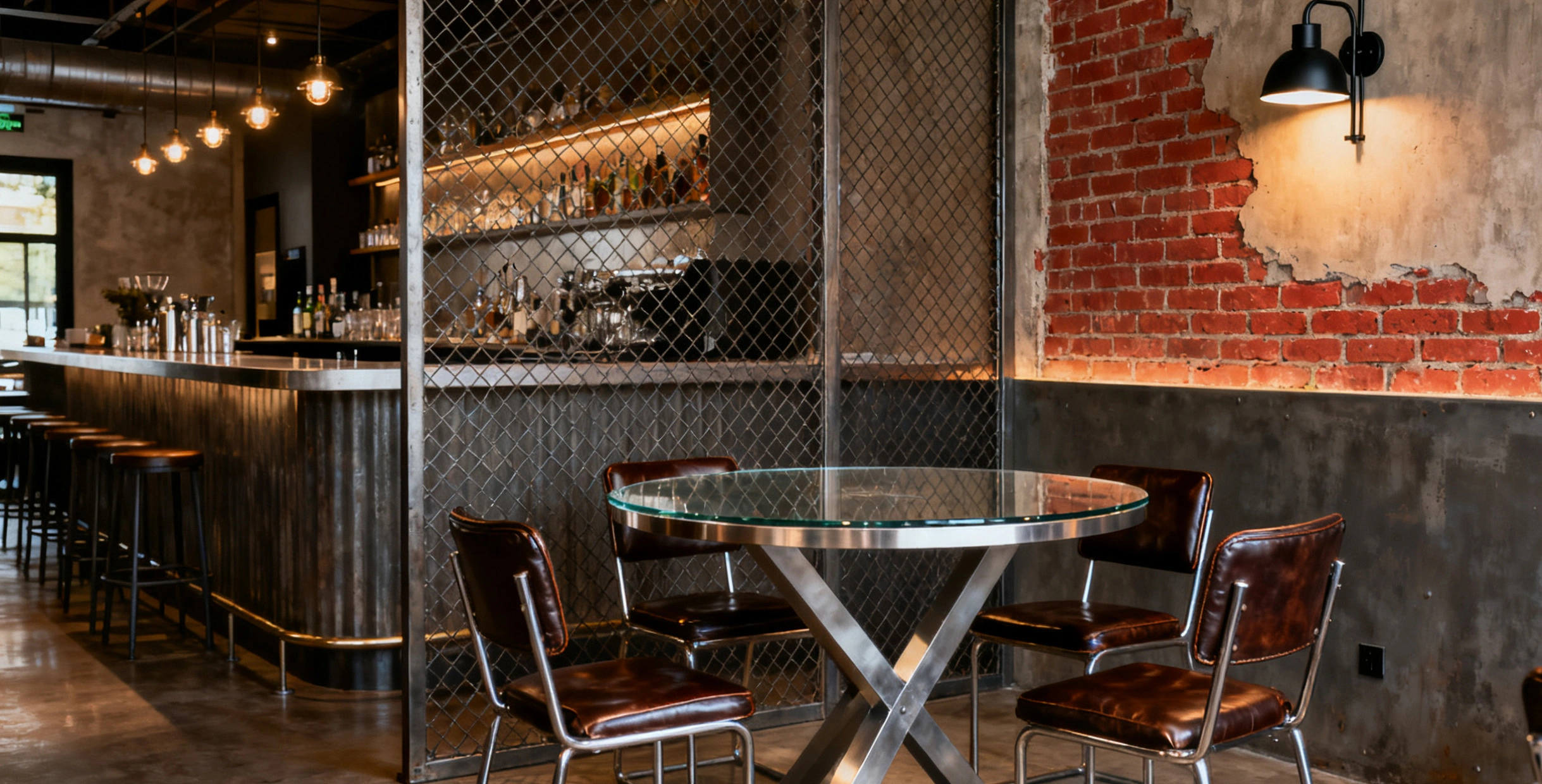
5. Balancing Budget, Maintenance & Brand Story
As a restaurant owner, you’re constantly balancing cost, durability, and aesthetic appeal. The perfect tabletop isn’t necessarily the most expensive one — it’s the one that matches your dining rhythm and customer expectations.
| Business Type | Recommended Tabletop | Maintenance Level | Visual Effect |
|---|---|---|---|
| Fine dining | Sintered stone / walnut | Low | Elegant, timeless |
| Casual café | Laminate / light oak veneer | Low | Warm, approachable |
| Bistro or wine bar | Solid wood | Medium | Natural, tactile |
| Outdoor patio | Compact laminate / aluminum | Very low | Durable, weatherproof |
Owner insight: Think about how guests interact with your tables. Are they there for a 20-minute lunch or a 3-hour wine dinner? That determines which material truly fits your restaurant.
6. Why Customization Matters More Than Ever
Buying ready-made furniture might seem convenient, but custom restaurant furniture ensures your space feels uniquely yours.
Custom tables allow you to tailor every element — from table height to edge curvature, stain tone, and texture — details that make your restaurant feel intentional, not generic.
Mingmeng’s design process starts with one question: “What kind of experience do you want your guests to have?”
From there, every design choice — from materials to finishes — is made with purpose.
“We didn’t just buy tables,” says a client from Toronto. “We built part of our restaurant’s identity.”

7. Practical Tips Before You Order
- Ask for samples. Touch and test finishes under your actual restaurant lighting.
- Plan for maintenance. Involve your staff — they know what survives busy service.
- Measure accurately. Leave at least 90 cm between tables for comfort.
- Request drawings. A professional supplier (like Mingmeng) provides 3D layouts before production.
Small steps now prevent big regrets later.
Need Professional Help?
Choosing the right tabletop isn’t about following trends — it’s about designing a space that feels right for your customers and works for your business.
Every material — wood, laminate, stone, or metal — tells part of your restaurant’s story.
If you need expert guidance on selecting materials or customizing your next project, our design team is ready to help.
📞 Contact Mingmeng Furniture for one-on-one consultation and professional recommendations.
👉 Email: eiko@mingmeng07.com
👉 Website: https://www.mingmeng07.com/
Let’s build dining spaces that look exceptional and last for years.


 English
English Zulu
Zulu Igbo
Igbo Yoruba
Yoruba Xhosa
Xhosa Afrikaans
Afrikaans Sesotho
Sesotho Thai
Thai Vietnamese
Vietnamese Indonesian
Indonesian Malay
Malay Lao
Lao Myanmar
Myanmar Khmer
Khmer Turkish
Turkish Hausa
Hausa Portuguese
Portuguese Hindi
Hindi Arabic
Arabic Russian
Russian Japanese
Japanese Chinese
Chinese





